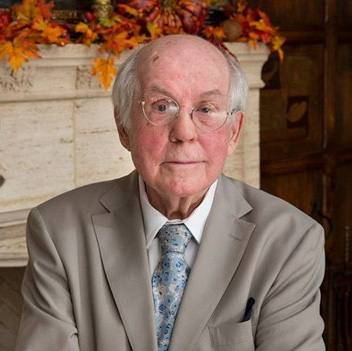-
Sharing Mayo Clinic: From health care advisor to transplant patient to Mayo Clinic employee

Piper Nieters Su had spent years in Washington, D.C., working with institutions like Mayo Clinic on health care policy reform. Piper's relationship with Mayo Clinic changed dramatically, however, after she was diagnosed with a rare liver disease.
The comments from her spouse were made out of love, but they were given when Piper Nieters Su didn't have time for them. "My husband made one or two passing comments that my eyes looked yellow," Piper says. "It was during the holidays, so I didn't really pay much attention to him. As we tend to do, I just sort of ignored it."
Then in January 2017, Piper — a longtime Washington, D.C., lawyer and health care policy advisor — was meeting with another lawyer when her husband's remarks were echoed by her colleague. "He’s also a physician and made a concerned comment that I was starting to look jaundiced and that I might want to see somebody about it,” Piper says.
After that, Piper scheduled an appointment with her primary care physician in Washington, D.C. "Following that appointment, they pretty quickly figured out I had primary sclerosing cholangitis, which is a fairly rare liver disease that, in my case, was progressing relatively quickly," Piper says. "Most patients can have it for 10 or 20 years before it does much damage, but mine was moving more quickly."
Waiting for a transplant
Primary sclerosing cholangitis is a disease that affects bile ducts, which carry the digestive liquid bile from the liver to the small intestine. The disease triggers inflammation that causes scarring within the bile ducts. The scarring makes the ducts hard and narrow, and that leads to liver damage. When liver damage is severe, a liver transplant may be necessary.
Based on the severity of her condition, Piper was placed on the transplant waiting list. "I went through that process, and it took about two months to get all of the testing done," she says. "At the same time, while there's not a lot you can do treatment-wise for primary sclerosing cholangitis, my disease was still progressing. So they decided to start putting stents in my bile ducts to keep them open."
Piper had the stenting procedure done every six weeks for several months as her doctors did their best to keep her disease at bay and buy her time while she waited for her name to move up the transplant waiting list. But when the stent treatments were no longer offering much help, Piper's care team offered a new approach.
"The disease just kept progressing, so my care team strongly encouraged me to start pursuing waiting lists in other parts of the country because where I was, in the Mid-Atlantic region, the demand for livers is great, and the supply is small," Piper says.
"While I, of course, knew the name and reputation, I didn't fully understand why Mayo Clinic is so world-renowned."
Piper Nieters Su
One of the places her team recommended was Mayo Clinic. And even though she'd never been there, Piper knew Mayo Clinic well. "I'd been in D.C. for about 20 years at that point, working on Capitol Hill and in the health care space, and Mayo Clinic was a client of mine," she says. "While I, of course, knew the name and reputation, I didn't fully understand why Mayo Clinic is so world-renowned."
That changed when she arrived at Mayo Clinic's Rochester campus. "Coming to Mayo was a night-and-day patient experience from the care and treatment I'd been receiving elsewhere," she says. "Before I arrived, they had all of my appointments set up. What had previously taken me two months to get done elsewhere, I got done in four days. It was an entirely different experience for me."
After she met with Charles Rosen, M.D., in the Mayo Clinic Transplant Center, and he told her he felt there was more he and his colleagues could do for her, Piper decided to transfer her care to Mayo Clinic.
"The biggest difference in coming to Mayo Clinic for me was that it was the first time in my entire experience of being sick that I felt like people truly cared and understood what I was going through, knew exactly what they needed to do to get me better, and knew exactly what was happening with my care at any given moment," she says. "There was this comfort that my husband and I felt when we came to Mayo that we had not previously experienced. For us, that was a game-changer, and so we decided pretty quickly that when the time came, we wanted my liver transplant to happen at Mayo Clinic."
To move or not to move
To make that happen, Piper and her family needed to sort through a host of logistics. "As soon as we shifted into destination-patient mode, we started making all the arrangements necessary, including figuring out a plan to allow us to fly to Rochester on a dime whenever a new liver became available," Piper says. "That planning was complicated because our son was fully entrenched in school and his friends. So we considered whether I'd just stay in Rochester while I waited for a liver, or if we should pull our son out of school and move our entire family to Rochester."
As Piper and her husband debated the pros and cons of that decision, a new development surfaced that affected Piper, as well. The chair of Mayo Clinic's Division of Public Policy and Government Relations announced her retirement. Given Piper's past working relationship and experience with Mayo Clinic, she was asked if she'd be willing to step in to help with some of that work until a permanent replacement was found. Piper agreed. "Not only was my relationship with Mayo as a patient becoming more frequent, so was my work with Mayo," she says.
Piper says that question quickly led to another. "Long story short, I decided to apply for the permanent Government Relations Division chair role right around the same time I was trying to figure out all of the details of being a destination patient at Mayo Clinic," she says. "My husband and I just felt like the universe was pointing us in the same direction in a lot of different ways, so we took the plunge. Thankfully, I got the job. I moved to Rochester in April 2017 and started doing weekly commutes back and forth to D.C. while my son finished school."
New liver, new life
Two months into that arrangement, Piper's health began to change. "In June, my numbers started shifting significantly and got much worse," she says. "My doctors said, 'You've gotten to the point where you can no longer travel. You need to stay in Rochester now because you're getting to the top of the transplant list.'"
Piper's care team delivered that news on a Thursday, a day before Piper was set to board her weekly flight back to Washington, D.C. She requested one last trip home to help her husband pack. "But they said, 'No, you're sick enough that we really don't think you should go anywhere,'" Piper explains.
From that point on, Piper wouldn’t set foot in her family's home in Washington, D.C. "That was really strange for me," she says. "But I stayed in Rochester while my husband and son packed up our house in D.C. We then sold our house and moved all of our stuff to Rochester. I never went back to our home, which, again, was strange but well worth it."
One month later, and two days before her 40th birthday, Piper's care team called to say they'd found a new liver for her. "I got to Mayo Clinic Hospital, Saint Marys Campus an hour or so later and did my pre-op work-up and went into surgery around 1 p.m. and was out, amazingly, by 5 p.m. that same day," Piper says. "Everything went incredibly well. I spent one night in the intensive care unit and, believe it or not, was back home just five days later."
"Being a patient at Mayo has been a life-changing and hugely meaningful experience for me. The chance to help make sure other people get that, too, is a fantastic reason for me to come to work every day."
Piper Nieters Su
For Piper and family, home is now Rochester, Minnesota. "Moving to Rochester and working for Mayo Clinic full-time has been a big life change for us, in addition to all of my medical changes," Piper says. "We're 100% happy with the decision we've made because it's allowed me to get through some pretty big medical issues while living a relatively normal life."
Through her work for Mayo Clinic, now Piper is dedicated to making sure others have a chance to lead that kind of life, too.
"I joke with people that you couldn't find a more enthusiastic advocate than someone who can talk firsthand about the benefits of being a patient at Mayo Clinic," she says. "Being a patient at Mayo has been a life-changing and hugely meaningful experience for me. The chance to help make sure other people get that, too, is a fantastic reason for me to come to work every day."
HELPFUL LINKS
- Read more about primary sclerosing cholangitis.
- Learn about the Liver Transplant Program at Mayo Clinic.
- Check out the Mayo Clinic Transplant Center.
- Connect with others talking about transplants on Mayo Clinic Connect.
- Explore Mayo Clinic.
- Request an appointment.







